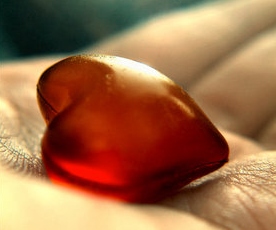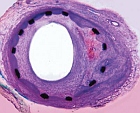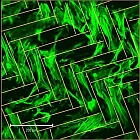Empa’s 1st Science Apéro in St. Gallen
The human body – a machine with need of repair?

| The narrowing of coronary vessels through calcification may result in heart circulatory problems or even a heart attack. Statistics show that this occurs all too frequently. In Switzerland every year, more than 16,000 operations to widen the coronary heart vessels, take place. | |||
| Hans Rickli, Chief of Cardiology at the Canton Hospital of St. Gallen, informed the many attentive listeners at Empa’s lecture hall, that the breakthrough in this field took place in 1995 thanks to newly developed implants and a new operating method which came about after years of intensive research. This breakthrough involves the use of a balloon introduced into the narrowed vessels, and then blown up pushing the calcium deposits against the wall of the vessels. Then vessels supports, so called “stents”, are placed in the vessel in order to keep it open. Without these “stents”, said Rickli, in some cases, vessels narrowed again in a rather short time. Conventional metal “stents” function well and leave arteries and veins open; however, the use of metal often leads to undesirable effects. ”Not infrequently, blood clots, scar formation and inflammations occurred”, said the cardiologist. In order to minimize these undesirable effects, researchers world wide examined the interaction between artificial materials and human cells, hoping to find and develop new and more “body tolerated” implants. For example, the “stents” can be ingeniously coated with nanoparticles and medications which are released into the vessels and thus help prevent scar tissue formation. | ||||
| Biocompatible materials are sought One of the research topics keeping Empa’s research group MaTisMed busy (Materials and Tissues for Medicine, part of Empa’s laboratory «Materials Biology Interactions») is the interaction of artificial surfaces with human cells. Arie Bruinink, the leader of the group, shared with the audience some results of his research and showed a few microscope pictures and short film sequences. In «in vitro» experiments, that is, experiments done in test tubes with adult stem cells taken from the thighbone and nerve cells taken from the spinal cord, Bruinink’s team discovered that surface topography of the materials used influence cell behavior. Thus, differing migration speed, alignment and adhesion of cells on the surface of the material are influenced by its structure. | |||
| These factors are critical for speedy and successful healing of wounds as well as the speedy ingrowth of implants, according to Bruinink, who formerly headed the group of «In vitro-Neurotoxicology» at the ETH in Zurich. In spite of many investigations into biocompatibility and similar experiments carried out at Empa in part in cooperation with industrial partners, research in this field is still in its infancy. As Bruinink said «as yet, we know too little about which material characteristics cause what kind of cell behavior». The smallest differences in the properties of implant surfaces coated with nanoparticles can cause quite varied reactions with different cells, and this of course poses a great challenge to Bruinink and his team. | ||||
| How far is too far? The implanted «spare parts» must be not only bio but also psycho compatible, claims Hans Rudolf Schelling, a Psychologist with the Center for Gerontology at the University of Zurich. Ever since René Descartes, an early 17th century French Philosopher defined the machine as a model for man, the lines separating the two have become blurred, declared the Psychologist further. «Recently, with all the bodily inserted «spare parts», such as a hip joint, prostheses, cardiac pacemakers and vessel supports, a regular symbiosis between man and machine has taken place – and the result is a being which is a mixture of the two». The question now arises, as Schelling sees it, how to go about with such a «cyborg» (cybernetic organism). Will the quality of life and wellbeing truly improve in every case? Who will take responsibility for life prolonging measures? | ||||
| Who shall decide as to who can take advantage of new technical achievements? And how many «spare parts» in our body will qualify us to be «cyborgs», rather than humans? Without doubt, it is best not to be dependent on this kind of «spare parts». ”The risks of arterial narrowing for example, can be reduced by about 50% through a lifestyle without cigarettes, with a healthy diet and enough movement”. With these concluding words sent Hans Rickli, the cardiologist, the audience on its way. Author: Lukas Herzog | ||||
| Scientific information: Editorial: | ||||
| |||



